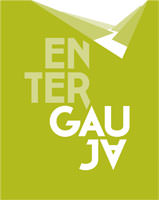There are only a very few places in central and northern Europe that could offer a nature enthusiast as many pristine habitats and as much natural serenity as the Baltic states (Latvia, Estonia and Lithuania). After seeing and exploring the untouched nature of the Baltic States, many visitors may return home with the impression they have just spent their horseback riding holidays in Europe’s biggest nature park.
Geographically, the three Baltic States (Latvia, Estonia and Lithuania) have much in common for Adventurous holidays. Forests and lakes cover a vast amount (50%) of the countryside; there are 2,800 lakes in Lithuania (many of them glacial), more than 1500 islands in Estonia and more than 500 km of sandy beaches in Latvia alone.
Baltic States, the countries of Estonia, Latvia, and Lithuania, are located in north-central Europe, on the eastern coast of the Baltic Sea. The Baltic countries were formed in 1918 when they remained independent republics until their involuntary incorporation in 1940 into the USSR. They gained their independence from the former USSR in 1991. All three countries are currently members of European Union and NATO.
About Latvia
One of the greatest things about Latvia is that it offers a lot of diversity. Forests, lakes, meadows and of course the sandy beaches of the Baltic sea are evenly distributed through the entire territory which makes every part of the country have its special feature for all best holidays. The untouched wildlife and landscape of Latvia has been appreciated by many.
Closeness to the nature is usually the biggest surprise for tourists who discover Latvia. The natural serenity is almost exotic for a region that is so close to the often crowded and urbanized Europe.
For travelers, the best thing about Latvia is that it is so compact. Its 500 km of sandy beaches are easily reached from historical towns, where medieval Hanseatic foundations support baroque and art nouveau buildings that become venues for cultural festivals during the summer. Families of storks happily give their seal of approval to the unspoiled nature, fresh air and clean water around them. In addition to Riga, its spectacular gateway, there are 6 other
UNESCO world heritage listed sites. With such a variety, Latvia is best enjoyed slowly.
About Estonia
Estonia is the smallest of the three Baltic states with just 1.3 million people and one of the least populous countries in the Europe. It’s easy to escape the crowds in Estonia and explore fantastic landscapes and rich wildlife. Almost half of the country is covered with forest and natural wetlands cover more than one fifth of the country. Estonia offers ideal opportunities for camping, canoeing, kayaking and observing wildlife in a quiet atmosphere.
This country has an amazing array of natural habitats leaving plenty of room for wildlife from bears and lynx to elusive Great Snipes and thousands of migrating birds. Estonia’s 1.500 islands make up for 10% of the country’s surface, creating a stunning coastline of almost 3800 km with hundreds of shallow bay and lagoons, which are especially attractive to migrating waterfowl in winter and spring but also to a very diverse range of breeding birds. More than 350 species have been recorded in Estonia.
About Lithuania
It may be hard to imagine for citizens of Western or Central Europe that there are countries on our continent with the size of Ireland but a mere 3,5 million inhabitants. Lithuania is one of these, where traditional farming, extensive use of land, marshes, bogs and pasture land, deep forests and tranquil lakes are just very normal sights. Plus, the country features a National Park that preserves a natural monument that many Europeans will know –
the Curonian spit. Nearly 12% of the country are protected areas.
When to visit
The climate in the Baltic States gives the opportunity to enjoy and explore the nature in great diversity, clearly splitting the year into four seasons.
Late spring and SUMMER are traditionally the most popular times to visit the Baltic States. This is the time to enjoy long days and very short nights - the magic moment when meadows are blooming and the seaside is welcoming with its long white and wild beaches. Summer is the most suitable time to make long and significant rides into the great outdoors.
AUTUMN can be an extraordinary beautiful season for visiting the Baltic States, with the golden yellow and red leaves of birches, oaks and maples contrasting with the dark-green pines and firtrees. In these cooler months of September and October you can feel the nostalgia of the forests preparing for the winter as the migratory birds fly away.
WINTER can be a magical time with lakes, rivers and part of the Baltic Sea freezing over. White and crunchy snow is covering every little path and road turning every bit of nature into a white and fluffy carpet. Winter is the most suitable time for those who are truly willing to look deeply into the nature’s secrets.
SPRING time is a longed for but sudden explosion of energy and colors that transform the landscape into green luxuriance. The season is full of freshness – the birds are singing and the nature is waking up after the long nap making it so easy to feel energized and awake.
